Star Singer- Actress of Marathi and Hindi Cinema
शांता आप्टे वो गायिका थीं जिनके बारे में कहा जाता है कि उन्होंने फ़िल्मी परदे पर गाने की कला को ज़्यादा प्रभावशाली बनाया। आप अगर शुरूआती फिल्में देखेंगे तो ज़्यादातर कलाकारों के चेहरे गाते समय बहुत ज़्यादा स्पॉन्टेनियस नहीं होते थे। मगर शांता आप्टे परदे पर गाते हुए अपनी आँखों और हाव-भाव से गाने में जान डाल देती थीं। जो उस वक़्त एकदम नया प्रयोग था।
सिनेमा में ऐसी बहुत कम महिलाएँ हुई हैं जिन्होंने ग़लत बातों का खुलकर विरोध किया हो। ऐसी ही थीं सिंगिंग स्टार शांता आप्टे जो न सिर्फ़ बड़े स्टूडियो और बड़े नामवालों के ख़िलाफ़ खड़ी हुई, बल्कि बाबूराव पटेल जैसे ऊँचे क़द वाले एडिटर से भी नहीं डरीं। इसीलिए उन्हें “woman of rare metal” कहा गया।
23 नवम्बर 1916 को महाराष्ट्र में जन्मी शांता आप्टे मराठी और हिंदी सिनेमा की एक मशहूर सिंगर-एक्ट्रेस थीं।उनके पिता स्टेशन मास्टर थे, मगर गायन में उनकी बहुत रूचि थी। उन्हीं से शांता आप्टे को भी गाने का शौक़ लगा। उन्होंने बचपन से ही स्थानीय गणेशोत्सव में भजन गाने शुरु कर दिए। बाद में उन्होंने पंढरपुर के महाराष्ट्र संगीत विद्यालय से संगीत की शिक्षा भी ली।
इन्हें भी पढ़ें – राजकुमारी
नौ साल की उम्र में बाबूराव पेंढारकर ने उन्हें बतौर बाल कलाकार फ़िल्म “श्याम सुन्दर” में पेश किया। इस फ़िल्म में उनके भाई बाबूराव आप्टे ने भी अभिनय किया था। फिल्म का निर्देशन किया था भालजी पेंढारकर ने, ये फ़िल्म मराठी की पहली सिल्वर जुबली मानी जाती है। इसके बाद वो प्रभात फ़िल्म्स की सुपरहिट फ़िल्म “अमृत मंथन” में हीरो की बहन के रूप में दिखीं। इस फिल्म को वेनिस के इंटरनेशनल फिल्म फेस्टिवल में दिखाया गया।
शांता आप्टे ने केशवराव भोले के संगीत निर्देशन में चार सोलो सांग्स भी गाये थे, जिनमें से एक पहली रिकार्डेड फ़िल्मी ग़ज़ल भी थी। इस फ़िल्म के सभी गाने बहुत लोकप्रिय हुए, हाँलाकि संगीत केशवराव भोले शांता आप्टे को लेकर बहुत आश्वस्त नहीं थे, उन्हें शक़ था की वो उनका लाइट क्लासिकल स्टाइल अपना पाएंगी या नहीं। मगर जब फ़िल्म और गानों महाराष्ट्र के बाहर भी लोकप्रियता मिली तो सबका शक़ दूर हो गया और वो प्रभात की मुख्य तीन लीडिंग लेडीज में शामिल हो गईं उसके बाद उन्होंने प्रभात की कई मशहूर फ़िल्मों में बतौर गायिका अभिनेत्री काम किया।
अमर ज्योति में प्रभात की पहली फिल्म थी जिसमें प्लेबैक का इस्तेमाल किया गया था, इसमें भी शांता आप्टे का अभिनय पसंद किया गया। लेकिन उनकी सबसे महत्वपूर्ण फ़िल्म 1937 में आई जिसमें उन्होंने एक इंग्लिश सांग इतनी ख़ूबी से गाया कि उनकी गायन प्रतिभा के सब क़ायल हो गए।
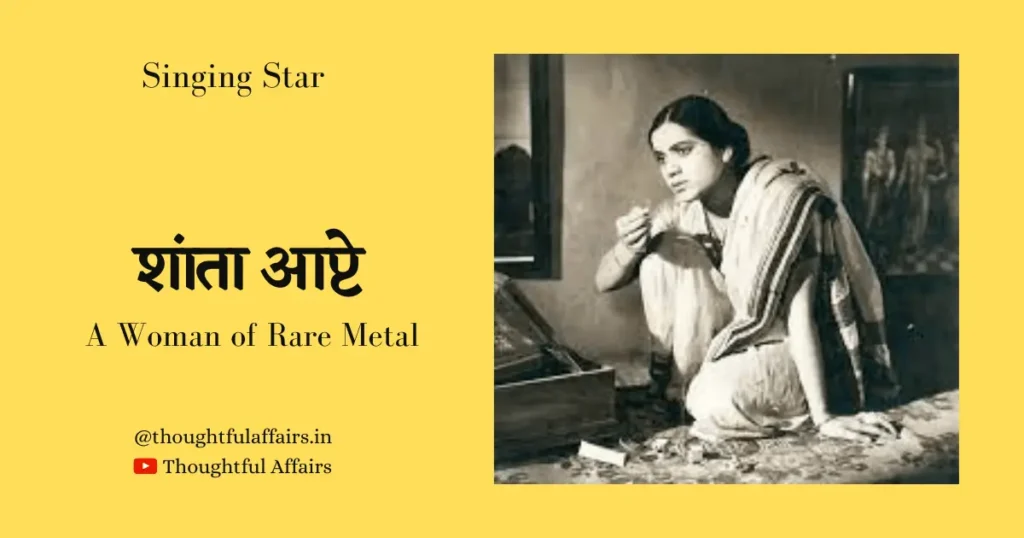
ये फ़िल्म मराठी में “कुंकू” नाम से रिलीज़ हुई थी और हिंदी में “दुनिया न माने” इस फ़िल्म में उन्होंने एक ऐसी युवा लड़की का रोल किया जिसकी शादी एक अमीर बूढ़े विधुर व्यक्ति के साथ कर दी जाती है। मगर वो लड़की उसे अपना पति मानने से इंकार कर देती है। एक अल्हड़ लड़की और फिर एक दृढ़ निश्चय स्त्री, दोनों तरह से उनका अभिनय लाजवाब था। इस फिल्म का विषय उस समय के समाज की सोच के लिहाज़ से ही बहुत आगे का था और शांता आप्टे के अभिनय ने उसे एक क्रन्तिकारी रूप दे दिया। इस किरदार ने उन्हें बहुत सी युवा लड़कियों की प्रेरणास्रोत बना दिया।
इन्हें भी पढ़ें – ख़ुर्शीद बानो
शांता आप्टे की बहादुरी
शांता आप्टे ने फ़िल्मों में ही नहीं असल ज़िंदगी में भी क्रन्तिकारी क़दम उठाए। उस ज़माने में कलाकार किसी एक स्टूडियो के कॉन्ट्रैक्ट में मंथली सैलेरी पर काम करते थे, इसलिए किसी दूसरे स्टूडियो या फ़िल्म प्रोडक्शन कंपनी के साथ काम नहीं कर सकते थे। ज़्यादातर स्टूडियो इसी तरह का कॉन्ट्रैक्ट बनवाते थे। मगर जैसे-जैसे शांता आप्टे की लोकप्रियता बढ़ रही थी दूसरे स्टुडिओज़ भी उनके साथ फिल्म बनाना चाहते थे।
शांता आप्टे ने स्टूडियो के मालिकों से गुज़ारिश की कि उन्हें इस बंधन से मुक्त कर दिया जाए मगर वो लोग इसके लिए तैयार नहीं थे। तब जुलाई 1939 में अपने स्टारडम के पीक पर शांता आप्टे ने, प्रभात फ़िल्म कंपनी के, कॉन्ट्रैक्ट के इस क्लॉज़ को चुनौती दी और दो दिन तक भूख हड़ताल पर बैठी रहीं। इस बात को प्रेस ने एक पब्लिक स्टंट कह कर प्रभात स्टूडियो का ही साथ दिया और उन की बहुत आलोचना की। इसके बाद उन्होंने प्रभात छोड़ दिया और बतौर फ्रीलान्स कलाकार काम करने लगीं।
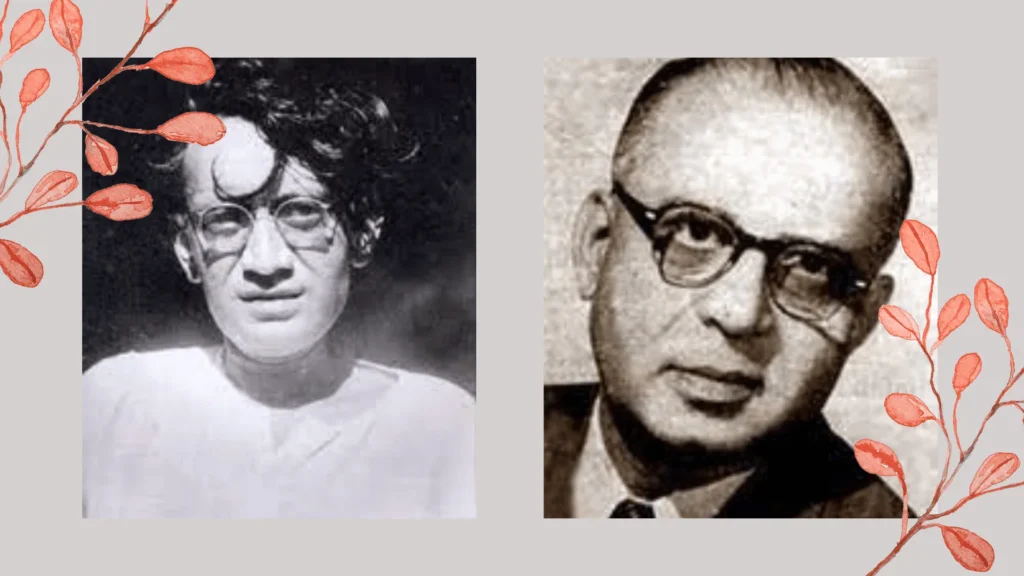
सआदत हसन मंटो ने बाबूराव पटेल के साथ कुछ वक़्त तक काम किया था और वो उनकी शख़्सियत से बख़ूबी वाक़िफ़ थे। उन्होंने अपने एक लेख में इस बात का ज़िक्र किया है कि जब शांता आप्टे चेन्नई के एक कॉलेज में बतौर गेस्ट गईं तो उन्होंने वहाँ ट्रॉउज़र पहना था इसी बात को लेकर फ़िल्म इंडिया मैगज़ीन के एडिटर बाबूराव पटेल ने उनके बारे में बहुत सी ऊटपटांग बातें लिखीं।
दरअसल जब तक बाबूराव पटेल और प्रभात स्टुडिओज़ के सम्बन्ध अच्छे थे तब तक बाबूराव पटेल हमेशा शांता आप्टे को most glamourous heroin of India लिखा करते थे मगर जब प्रभात से उनके सम्बन्ध बिगड़े तो उनकी क़लम शांता आप्टे के ख़िलाफ़ ज़हर उगलने लगी। एक दिन उनका गुस्सा फूट गया और उन्होंने बाबूराव पटेल के ऑफिस में घुसकर उन पर चाबुक से कई वार किए।
इन्हें भी पढ़ें – मीना कपूर
क़लम हाथ में आने का मतलब ये तो नहीं है कि आप किसी की भी इमेज से खिलवाड़ करने लगें। शांता आप्टे किसी भी ग़लत बात को बर्दाश्त नहीं करती थीं। इसके बाद 1940 में आई उनकी आत्मकथा में उन्होंने इंडस्ट्री के चरित्र पर गहरी चोट की है, और ऐसे तर्क दिए हैं, जिससे वाक़ई कोई भी सिनेमा में काम की शैली, वहां पनपती असमानता, और प्रोफेशनल संबंधों को लेकर सोचने पर मजबूर हो जाएगा।
40 के दशक से शांता आप्टे ने अलग-अलग फ़िल्म कंपनियों और स्टुडिओज़ के साथ काम करना शुरु कर दिया था। वो उस वक़्त की शायद अकेली ऐसी अभिनेत्री रही होंगी जिन्होंने मुंबई, कोल्हापुर, मद्रास, लाहौर और कोलकाता यानी उस वक़्त की लगभग सभी फ़िल्म इंडस्ट्रीज़ के साथ काम किया। उन्होंने 1941 की तमिल फ़िल्म “सावित्री” में अभिनय किया जिसमें नारद की भूमिका में थीं, कर्नाटक शैली की महान गायिका ‘M S सुब्बलक्ष्मी’।
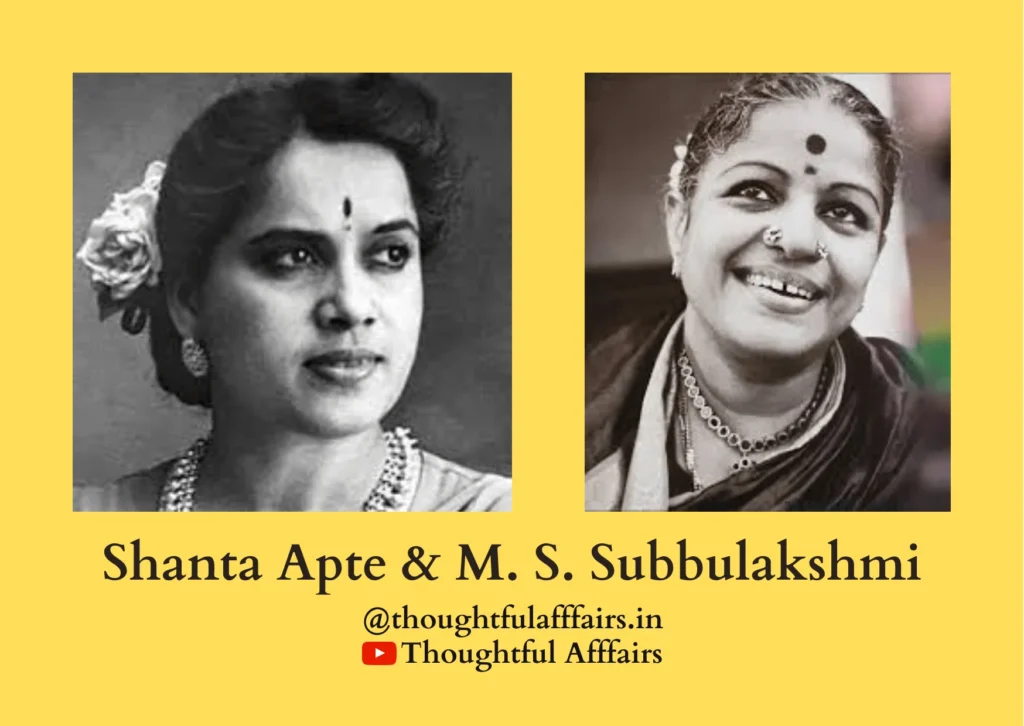
1942 में देबकी बोस की “अपना घर” और दलसुख पंचोली की “जमींदार” में वो बतौर हेरोइन दिखाई दीं। 1943 की “दुहाई” में उन्होंने ‘नूरजहाँ’ के साथ काम किया। 1944 में नन्दलाल जसवंतलाल की “कादंबरी” में दिखीं।
1946 में उनकी कई फिल्में आई – मास्टर विनायक की “सुभद्रा”, जिसमें उन्होंने लता मंगेशकर के साथ एक गाना भी गाया। सर्वोत्तम बादामी की “उत्तरा अभिमन्यु”, V M गुंजल की “पनिहारी”, भालजी पेंढारकर की “महर्षि वाल्मीकि”। उनका आख़िरी यादगार रोल 1949 की “स्वयंसिद्धा” में आया था। 50 के दशक में उन की बहुत कम फिल्में आईं, उनकी आख़िरी दो हिंदी फिल्में थीं – 1957 की “चंडी पूजा” और 1958 में आई “राम भक्त विभीषण”, इसके बाद वो फ़िल्मी पटल से ग़ायब हो गईं लेकिन मराठी थिएटर करती रहीं।
इन्हें भी पढ़ें – अमीरबाई कर्नाटकी
शांता आप्टे का निजी जीवन
उनकी शादी के बारे में दो अलग-अलग बातें सुनने में आती हैं। एक मत के मुताबिक़ उन्होंने शादी नहीं की थी, पर उनकी एक बेटी है। उनकी बेटी के तौर पर मराठी-हिंदी गुजराती की जानी-मानी अभिनेत्री नैना आप्टे का नाम सामने आता है, जिन्होंने 1957 की फ़िल्म “चण्डीपूजा” में अपनी माँ के साथ काम करके बतौर बाल कलाकार अपने करियर की शुरुआत की थी।
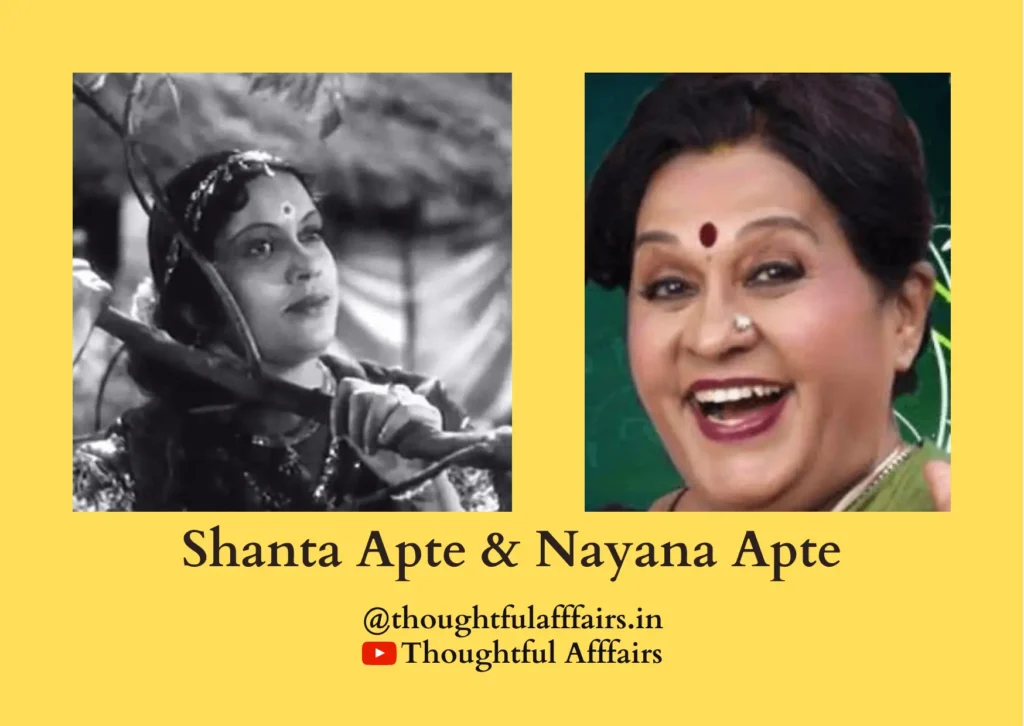
नयना आप्टे के मुताबिक़ शांता आप्टे ने 1947 में अपने मकान मालिक से शादी की थी लेकिन वो शादी तीन महीनों में ही टूट गई क्योंकि उनके पति उनके फ़िल्मों में काम करने के ख़िलाफ़ थे। लेकिन शादी टूटने तक शांता आप्टे प्रग्नेंट हो चुकी थीं, फिर बेटी के जन्म के बाद वो कभी अपने पति से नहीं मिलीं।
कहते हैं कि यूँ तो उनके बड़े भाई ने भी कुछ समय के लिए फ़िल्मों में अभिनय किया था पर मुख्य रूप से उन्होंने अपनी छोटी बहन शांता आप्टे के करियर को सँभाला और आगे बढ़ाया। लेकिन जब रिश्तों के बीच पैसा आ जाता है तो बहुत सी ग़लतफ़हमियां भी पनपती हैं और रिश्ते भी टूटते हैं। उनका भी अपने परिवार से रिश्ता टूट गया और आख़िरी दिनों में वो अकेली ही रहीं। उसी अकेलेपन में 24 फरवरी 1964 को उनकी मौत हो गई हुई।
उनके जैसी हिम्मतवाली अभिनेत्रियाँ इंडस्ट्री में बहुत कम हुई हैं और ज़्यादातर को उनकी हिम्मत के लिए शाबासी की बजाए दुत्कारा ही गया है, लेकिन ऐसे ही हिम्मतवाली महिलाओं ने इतिहास रचा है और दूसरी महिलाओं को आगे बढ़ने की हिम्मत दी है।
वैसे भी एक कलाकार को उसकी कला के लिए याद किया जाता है। शांता आप्टे भी अपने बेमिसाल अभिनय और लाजवाब गायकी के लिए हमेशा याद की जाती रहेंगी।
इन्हें भी पढ़ें – ज़ोहराबाई अम्बालेवाली
शांता आप्टे के गाये कुछ मशहूर गीत
- रात आई है नया रंग ज़माने के लिए – अमृत मंथन (1934) – शांता आप्टे
- कमसिनी में दिल का (पहली रिकॉर्डेड फ़िल्मी ग़ज़ल) – अमृत मंथन (1934) – शांता आप्टे – केशवराव भोले – वीर मोहम्मदपुरी
- सुनो सुनो हे बन के प्राणी – अमर ज्योति (1936) – शांता आप्टे – मास्टर कृष्णराव
- आज हमें बन बेहद भाता – अमर ज्योति (1936) – शांता आप्टे, बी नांद्रेकर – मास्टर कृष्णराव – नरोत्तम व्यास
- एक था राजा एक थी रानी दोनों पर छाई थी जवानी – दुनिया न माने (1937) – शांता आप्टे – केशवराव भोले – मुंशी अज़ीज़
- अरमान तड़पते हैं – जमींदार (1942) – शांता आप्टे – ग़ुलाम हैदर – दीनानाथ मधोक
- हमेशा खिले रहे – अपना घर (1942) – शांता आप्टे – हरिश्चंद्र बाली – नरोत्तम व्यास
- क्यों शोर कर रहे हो – दुहाई (1943) – शांता आप्टे –
- आई बसंत ऋतु – कादम्बरी (1944) – शांता आप्टे – हरी प्रसन्ना दास
- ख़ाली है दामन-ए-मुराद – भाग्यलक्ष्मी – शांता आप्टे – जी एम दुर्रानी / पी सी डे
- मैं खिली खिली फुलवारी – सुभद्रा (1946) – शांता आप्टे, लता – वसंत देसाई – मोती
- सोलह सिंगार मैं सजाऊँगी – पनिहारी (1946) – शांता आप्टे – एस एन त्रिपाठी – अली हुसैन
- हो प्यारे स्वप्न हमारे – वाल्मीकि (1946) – शांता – शंकर राव व्यास – महेश गुप्ता
- आज मेरे जीवन पथ पर – उत्तरा अभिमन्यु (1946) – शांता आप्टे – एस एन त्रिपाठी
- बोलो हे चंडी माता – चंडी पूजा (1957) – शांता – अजित मर्चेंट – कवि प्रदीप
शांता आप्टे को समर्पित वीडियो देखने के लिए लिंक पर क्लिक करें या Thoughtful Affairs के यूट्यूब चैनल पर जाएँ। (Kindly follow the link and watch A video Dedicated to Her)
English Translation Of this Article
Here is the Google translation of this article for your convenience. Please Ignore technical and grammatical errors because Google sometimes gets confused in little things like “He & She” or many others. so please ignore it.
Shanta Apte was the singer who is said to have made the art of singing more influential on the film screen. If you look at the early movies, most of the actors’ faces were not very spontaneous while singing. But Shanta Apte used to give life to the song with her eye movements and gestures while singing on the screen. Which was a completely new experiment at that time.
Born on 23 November 1916 in Maharashtra, Shanta Apte was a famous singer-actress in Marathi and Hindi cinema. Her father was a station master, but she was very interested in singing. Shanta Apte also felt fond of singing from him. He started singing bhajans in the local Ganesh festival in childhood. Later he also took music education from Maharashtra Sangeet Vidyalaya in Pandharpur.
At the age of nine, Baburao Pendharkar introduced her as a child artist in the film “Shyam Sundar”. Her brother Baburao Apte also acted in this film. The film was directed by Bhalji Pendharkar, this film is considered to be the first silver jubilee of Marathi. After this, she appeared in Prabhat Films’ superhit film “Amrit Manthan” as Hero’s sister. The film was screened at the International Film Festival of Venice.
Shanta Apte also sang four solo songs under the music direction of Keshavrao Bhole, one of which was also the first recorded film Ghazal. All the songs in this film became very popular, however, Sangeet Keshavrao Bhole was not very sure about Shanta Apte, whether she would be able to adopt his light classical style or not. But when the film and songs gained popularity outside Maharashtra, everyone’s doubts were cleared and she joined the main three leading ladies of Prabhat, after that she worked as a singer-actress in many famous films of Prabhat.
Her most important film came in 1937, in which he sang an English song so well that his singing talent was astonishing. This film was released in Marathi as “Kunku” and in Hindi as “Duniya Na Mane” in this film, she played the role of a young girl who is married to a rich old widower. But the girl refuses to accept him as her husband. Her acting was excellent, both as a thoughtless girl and then as a determined woman. The subject of this film was far ahead of the thinking of the society at that time and Shanta Apte’s acting gave it a revolutionary look. This character made her an inspiration to many young girls.
Shanta Apte took revolutionary steps not only in films but also in real life. In those days, artists worked on contract with one studio on a monthly salary, so could not work with any other studio or film production company. Most studios used to make such contracts. But as Shanta Apte’s popularity was increasing, other studios also wanted to make films with her.
Shanta Apte requested the owners of the studios to release them from the bondage of the contract but they were not ready for this. Then in July 1939, at the peak of her stardom, Shanta Apte challenged the contract clause of Prabhat Film Company and sat on hunger strike for two days. The press supported Prabhat Studio by calling this a public stunt and criticized her a lot. After this, she left Prabhat and started working as a freelance artist.
When Shanta Apte went to a college in Chennai as a guest, she wore trousers there, and Baburao Patel, the editor of Film India Magazine, wrote many ludicrous things about her. One day Shanta Apte’s anger broke out and he entered Baburao Patel’s office and stabbed him several times with a whip.
From the 40s, Shanta Apte started working with different film companies and studios. She may have been the only actress of that time, who worked with almost all the film industries of that time in Mumbai, Kolhapur, Madras, Lahore, and Kolkata. She acted in the 1941 Tamil film “Savitri” in which she played the role of Narada, the legendary Carnatic style singer ‘M S Subbalakshmi’. In 1942, she appeared as heroine in Debki Bose’s “Apna Ghar” and in Dalsukh Pancholi’s “Zamindar”. She worked with ‘Noor Jahan’ in 1943’s “Duhai”. Nandlal appeared in Jaswantlal’s “Kadambari” in 1944.
She had several films in 1946 – Master Vinayak’s “Subhadra”, in which he also sang a song with Lata Mangeshkar. Best Badami’s “Uttara Abhimanyu”, V M Gunjal’s “Panihari”, Bhalji Pendharkar’s “Maharshi Valmiki”. Her last memorable role came in 1949’s “Swayamsiddha”. She had very few films in the 50s, her last two were Hindi films – “Chandi Puja” in 1957 and “Ram Bhakta Vibhishan” in 1958, after which she disappeared from the film screen but continued to do Marathi theatre.
Two different things are heard about her marriage. According to one opinion, she did not marry, but she has a daughter. A well-known Marathi-Hindi Gujarati actress, Nayana Apte appears as her daughter. According to Naina Apte, Shanta Apte married her landlord in 1947, but that marriage broke up within three months because her husband was against working in films. But by the time the marriage broke up, Shanta Apte was already pregnant. after delivering her child she never met her husband.
It is said that although his elder brother also acted in films for some time, he mainly took care of his younger sister Shanta Apte’s career and furthered it. But when money comes between relationships, many misunderstandings also grow and relationships also break. She also broke her relationship with her family and she remained alone in her last days. She died in the same loneliness on 24 February 1964.
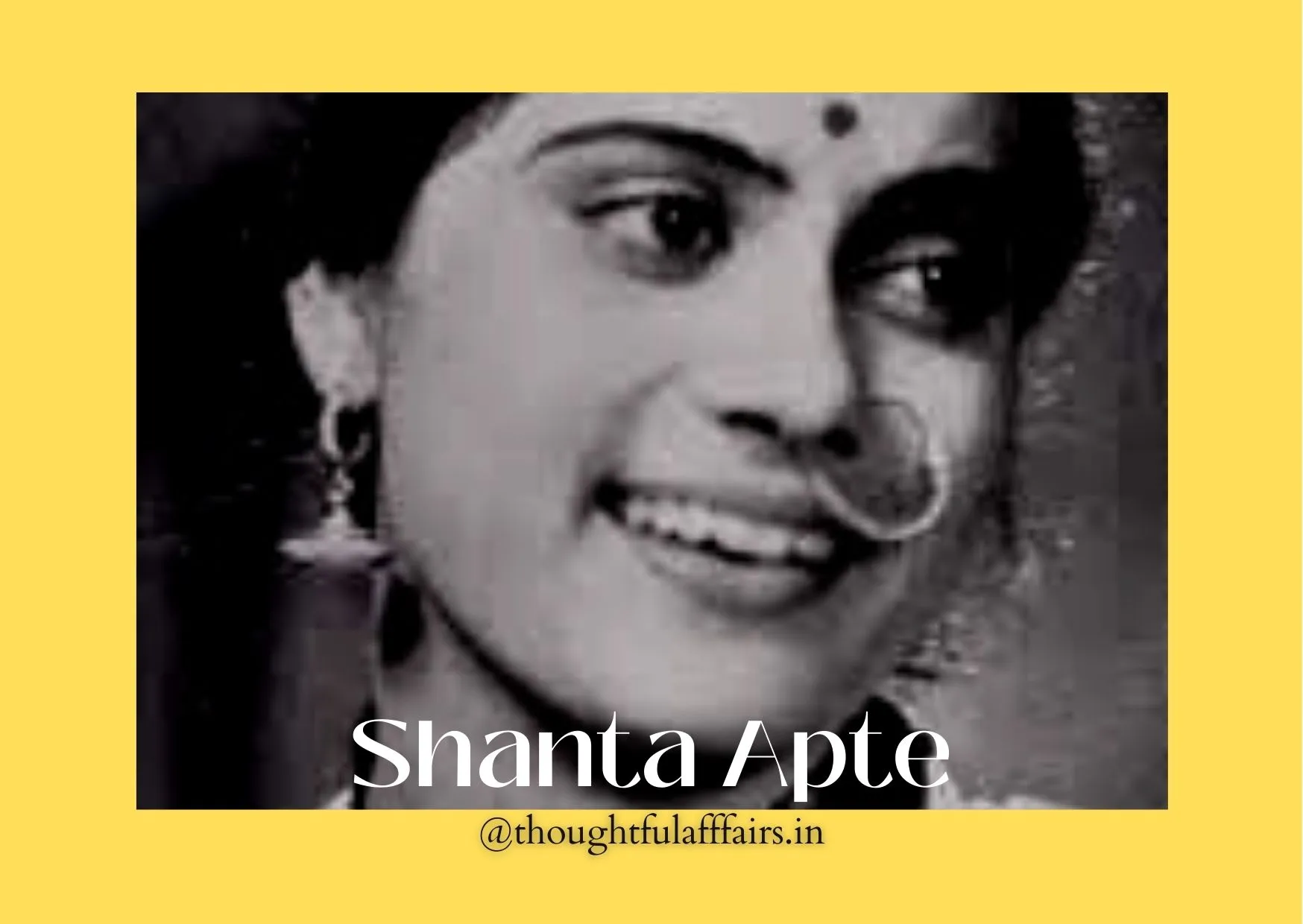
[…] इन्हें भी पढ़ें – शांता आप्टे – “A Woman of Rare Metal” […]